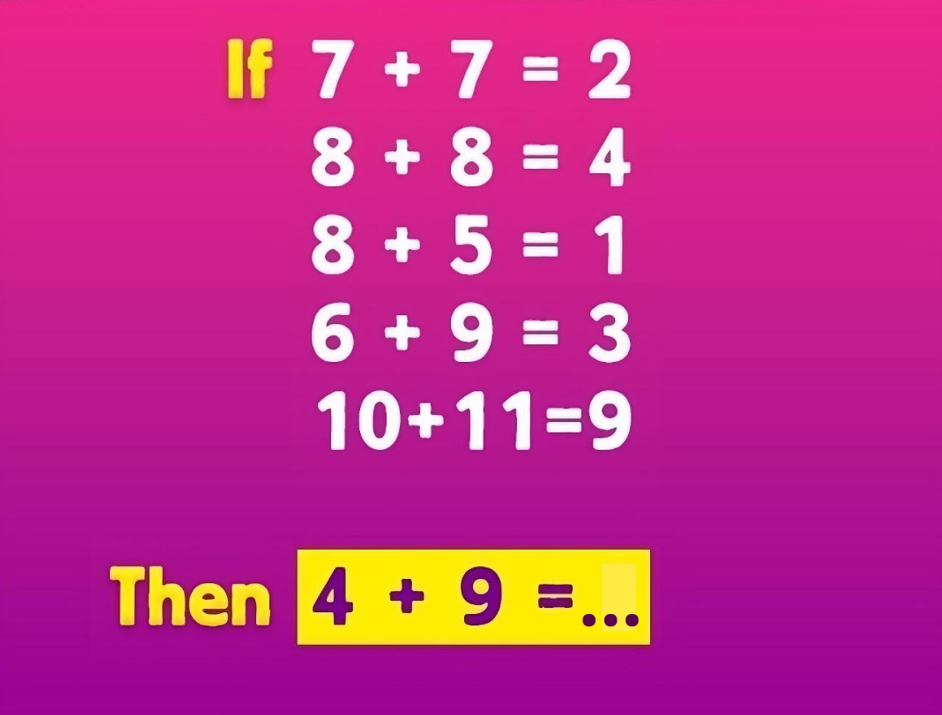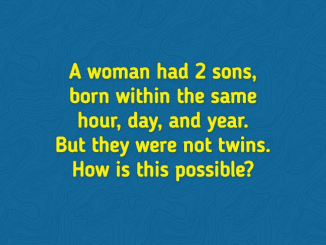Puzzles like this one are not just fun but also a great way to sharpen your logical thinking and analytical skills. At first glance, it looks simple—a basic math problem. However, as you try to figure it out, you’ll soon realize that this is no ordinary arithmetic. So, can you solve it? Take a moment to think before scrolling further.
Why Puzzles Like These Are Trickier Than They Seem

Many people dive into puzzles like this with the mindset of traditional math. After all, 7 + 7 equals 14, right? Wrong—at least not in this context. That’s the trick! The key to solving such puzzles lies in spotting a hidden pattern or rule. It’s not about what the numbers traditionally represent; it’s about interpreting them in the specific context of the puzzle.
Let’s discuss some common pitfalls:
- Assuming standard arithmetic rules apply.
People often start by adding numbers as they would normally do in math class. However, puzzles like these rarely follow conventional rules. - Overlooking details.
The pattern isn’t always obvious, and small clues are easy to miss. The sequence of given equations often contains subtle hints about the underlying logic. - Relying on intuition over logic.
It’s tempting to make guesses instead of systematically analyzing the problem. Logical reasoning requires patience and attention to detail. - Forgetting to test patterns across all equations.
Even if you identify a potential rule, it’s crucial to ensure it works consistently for every example provided.
Step-by-Step Solution
Let’s break this down and solve it together.
Step 1: Examine the given equations
- 7 + 7 = 2
- 8 + 8 = 4
- 8 + 5 = 1
- 6 + 9 = 3
- 10 + 11 = 9
Clearly, these don’t follow standard arithmetic. So, our goal is to figure out the hidden rule.
Step 2: Look for a consistent pattern
One way to approach this is to think about how the given inputs (the two numbers) relate to the outputs (the answers).
A useful observation:
The output for each equation is the result of the sum of the two numbers, minus 12.
Let’s test this hypothesis:
- For 7 + 7 = 2:
Sum of 7 + 7 = 14. Subtract 12 → 14 – 12 = 2. - For 8 + 8 = 4:
Sum of 8 + 8 = 16. Subtract 12 → 16 – 12 = 4. - For 8 + 5 = 1:
Sum of 8 + 5 = 13. Subtract 12 → 13 – 12 = 1. - For 6 + 9 = 3:
Sum of 6 + 9 = 15. Subtract 12 → 15 – 12 = 3. - For 10 + 11 = 9:
Sum of 10 + 11 = 21. Subtract 12 → 21 – 12 = 9.
The rule holds for all the given equations!
Step 3: Apply the rule to 4 + 9
Now that we know the pattern, let’s apply it to the final question:
- 4 + 9 = ?
Sum of 4 + 9 = 13. Subtract 12 → 13 – 12 = 1.
Thus, the answer is 1.
Why This Puzzle is a Great Brain Exercise
This puzzle tests your ability to think beyond traditional frameworks and encourages creative problem-solving. By breaking away from standard rules and looking for patterns, you’re developing essential skills like critical thinking, attention to detail, and logical reasoning.
Share Your Thoughts!
Did you solve it? If not, what approach did you try? Share your answers and reasoning in the comments below!
And don’t stop here—keep challenging yourself with more puzzles. Developing your logical thinking and analytical skills can be both fun and rewarding. After all, the more you exercise your brain, the sharper it becomes.


